Cats often hide their pain, making it crucial for pet owners to recognize the subtle signs that indicate discomfort.
From behavioral changes to physical symptoms, understanding these signals can ensure your feline friend receives the care they need.
However, not all behaviors signify pain, and some might be false alarms, leading to unnecessary worry if misinterpreted.
This guide helps differentiate between genuine warning signs and common misconceptions, enabling you to provide the best possible care for your cat.
Explore these 11 indicators of pain and 5 possible false alarms to keep your pet healthy and happy.
Decreased Appetite
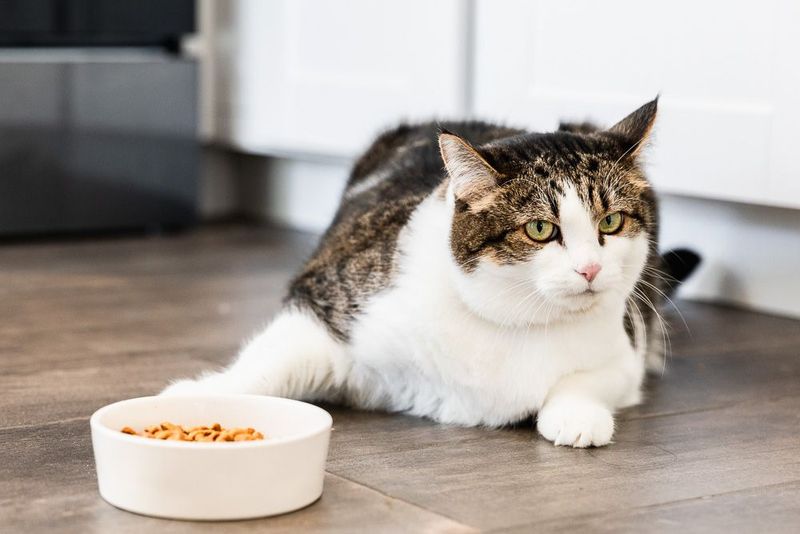
When Fluffy turns her nose up at her favorite meal, it might be more than just a picky moment. A sudden decrease in appetite can signal underlying pain or illness.
Cats may avoid eating if they associate meals with discomfort, making this a crucial observation for owners. Monitoring eating habits can reveal important insights into your pet’s health.
In some cases, dental issues may play a role, causing pain during chewing.
If your cat consistently skips meals, a visit to the vet is advisable to rule out serious conditions. Act quickly to address any potential problems.
Unusual Hiding
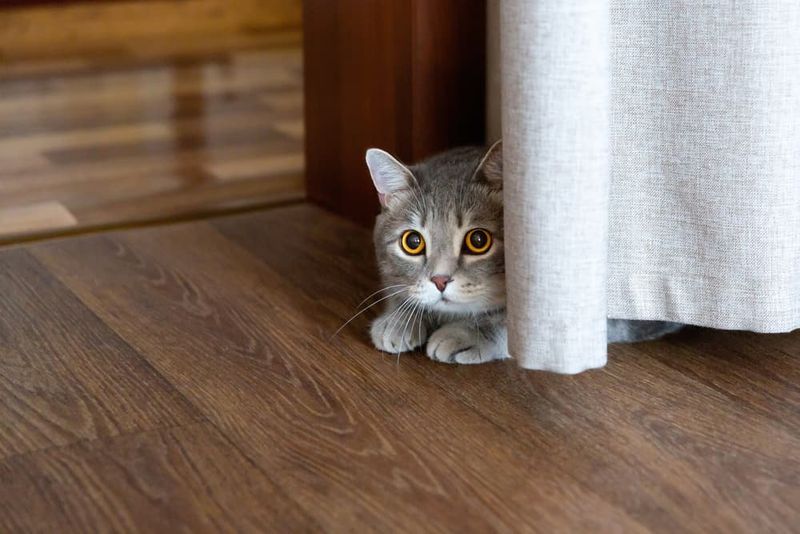
Is Mittens suddenly nowhere to be found? Cats often retreat to hidden corners when they’re in pain, seeking solitude and safety.
This behavior is a primal instinct, where the cat isolates itself to protect from potential threats.
Though some cats enjoy a little alone time, a drastic increase in hiding could indicate distress.
Observe their usual social patterns and take note of any significant changes. It’s essential to bring your feline out of their hiding spot, gently, and consult a professional if the behavior persists, to ensure they’re not suffering in silence.
Limping or Difficulty Moving
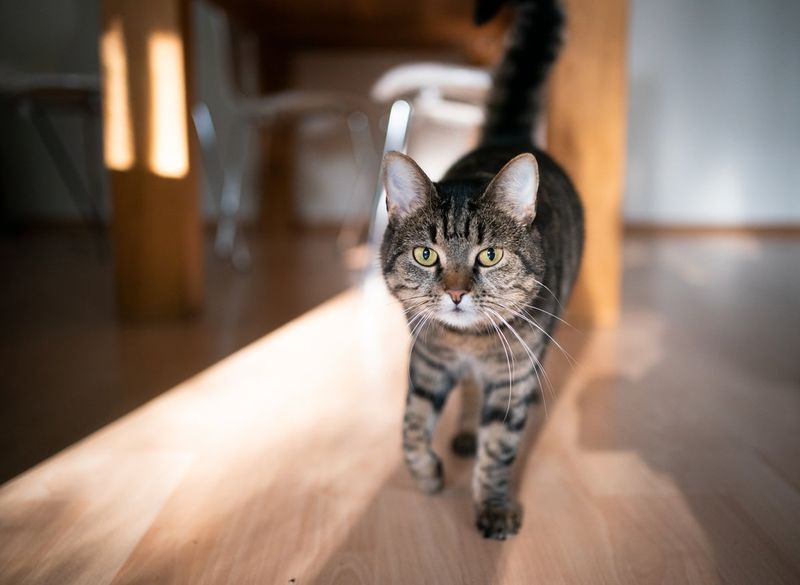
Watching your agile companion struggle to move can be distressing. Limping or stiffness may point to injuries, arthritis, or other painful conditions.
Cats, known for their graceful movements, may suddenly seem awkward or hesitant.
This can be due to strain, sprains, or even conditions like hip dysplasia.
If your cat exhibits these symptoms, it’s wise to restrict their movement and consult a vet. Early intervention can prevent further damage and ensure a smoother recovery. Your pet’s mobility is an integral part of their quality of life, so act promptly.
Excessive Grooming
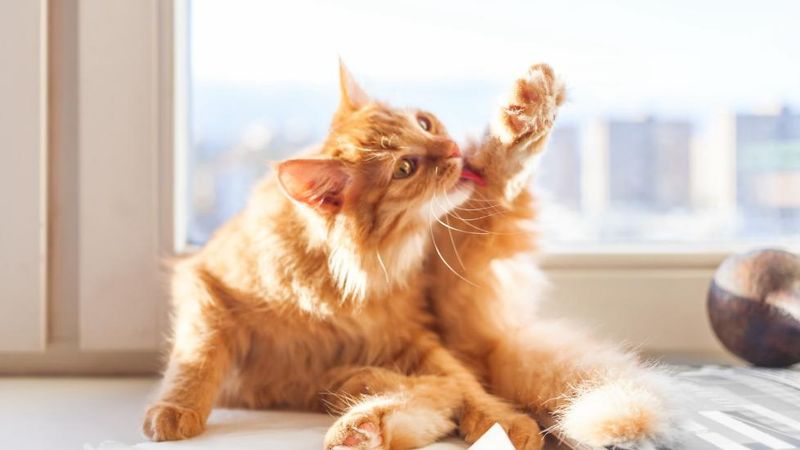
When Whiskers starts grooming one spot excessively, it might be more than just a cleanliness ritual. Cats often lick areas of pain to soothe discomfort, similar to how humans might rub a sore muscle.
This behavior can lead to bald spots or irritated skin, indicating a deeper issue.
Whether it’s a skin condition, arthritis, or an injury, excessive grooming is a red flag.
Pay attention to these habits and seek veterinary advice if the behavior continues. Identifying the root cause early ensures your cat stays healthy and comfortable.
Changes in Vocalization
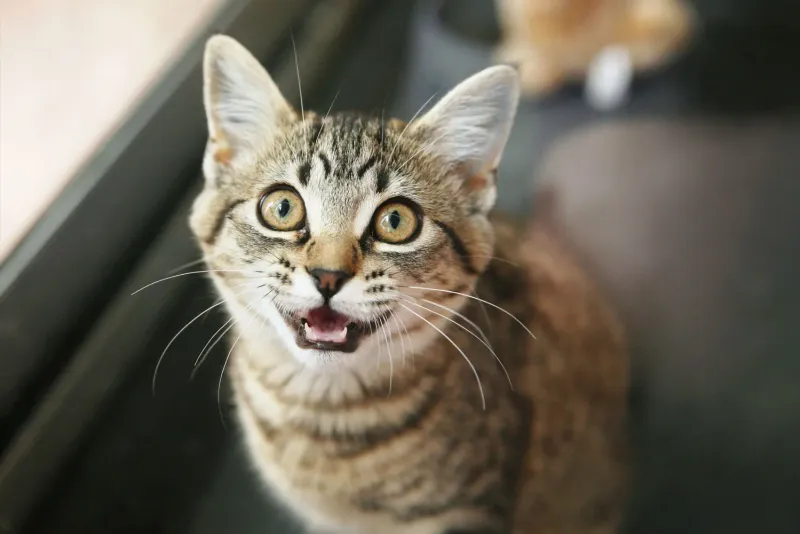
Has your silent companion turned into a chatterbox? Changes in vocalization, like increased meowing, often signal distress or discomfort.
Cats may use their voices to communicate pain or ask for help, especially if they’re in unfamiliar territory regarding their health.
This sudden change can be worrying, especially if combined with other unusual behaviors.
Be attuned to these vocal shifts and consult a vet if your cat’s communication style has drastically changed. Understanding their language can bridge the gap in recognizing their needs and ensuring their well-being.
Lethargy and Withdrawal
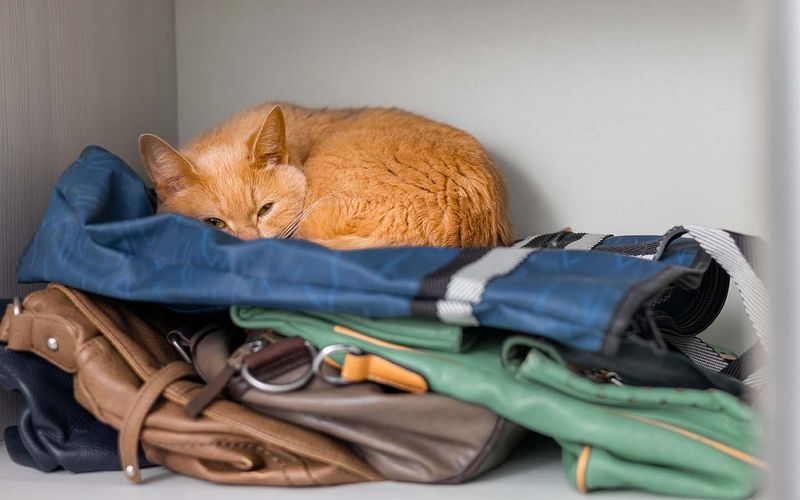
Bouncy and playful, cats are usually full of energy. A sudden shift to lethargy or withdrawal can indicate something is amiss.
Whether it’s a lack of interest in play or avoiding interaction, these signs shouldn’t be ignored.
Such behavior changes are often linked to pain or illness, demanding attention and care.
Encourage gentle engagement and monitor their activity levels closely. If the apathy continues, a veterinary check-up is essential to determine any underlying health issues and ensure your pet’s well-being.
Aggression When Touched
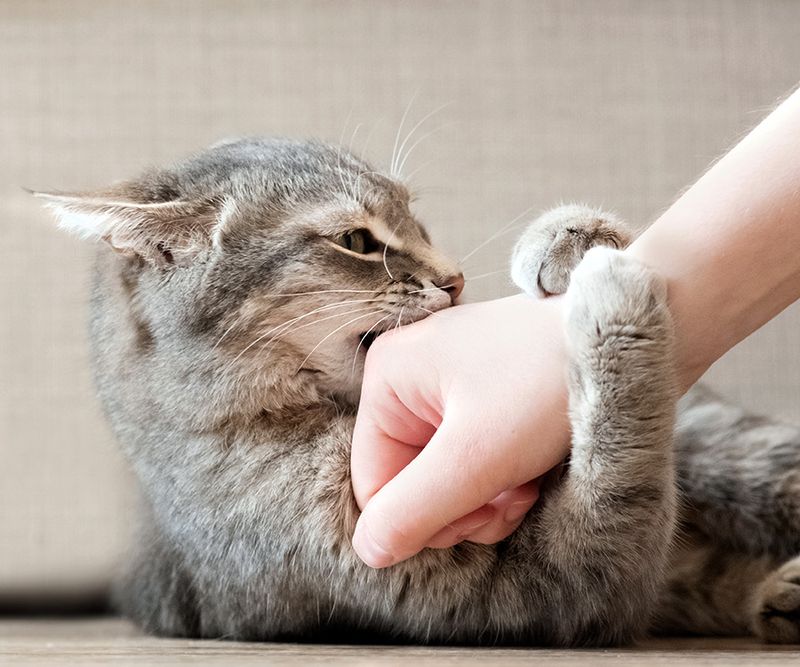
Once a darling cuddle bug, now a feisty feline? A sudden shift to aggression can be a response to pain.
Cats may react defensively if a touch triggers discomfort, warning you to steer clear of sore areas.
This change in demeanor can be perplexing but is crucial for identifying a problem.
It’s important to respect their space and consult with a vet to explore any underlying issues. Understanding their defensive behavior ensures you maintain a harmonious relationship while addressing their health needs.
Changes in Litter Box Habits
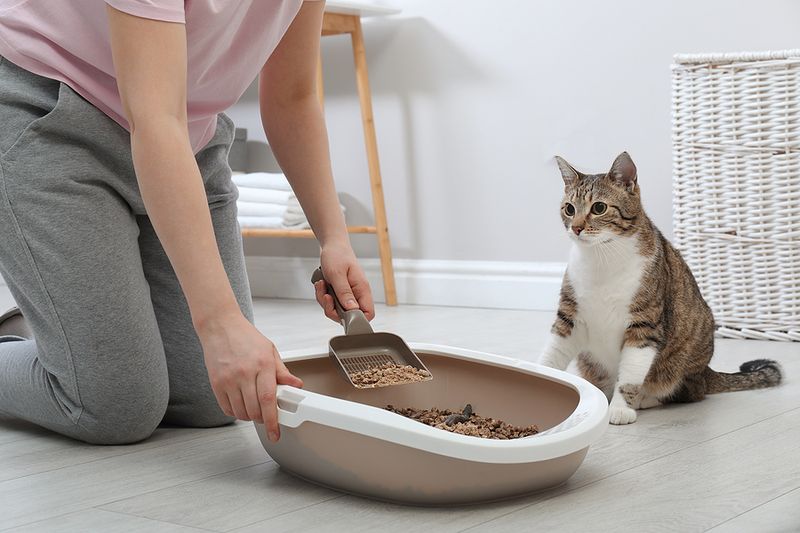
When Felix starts avoiding the litter box, it’s more than a minor inconvenience. Medical issues like urinary tract infections or arthritis can lead to painful litter box experiences.
This avoidance is often a cry for help, signaling that something is wrong.
Monitor their bathroom habits and ensure the litter box is accessible and clean.
A change in location or litter type might alleviate the issue, but persistent problems warrant a vet visit. Addressing these concerns early keeps your cat comfortable and prevents further complications.
Excessive Scratching
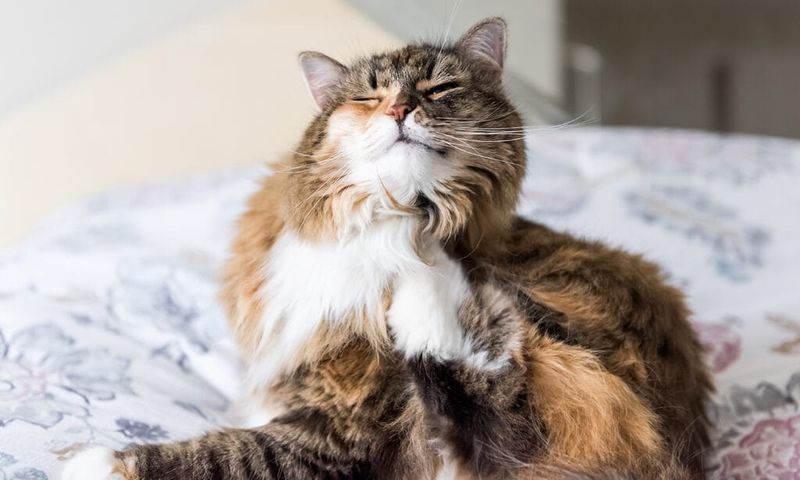
Felines love to scratch, but excessive scratching can indicate discomfort or skin irritation.
Cats may scratch more when stressed or in pain, seeking relief through physical action.
If your cat’s scratching becomes relentless, it may be time to investigate their environment and health.
Ensure they’re free from parasites and check for skin conditions. Providing proper scratching posts and toys can help, but a vet’s advice might be needed if the behavior persists. Periodic checks ensure your cat’s comfort and well-being.
Increased Thirst
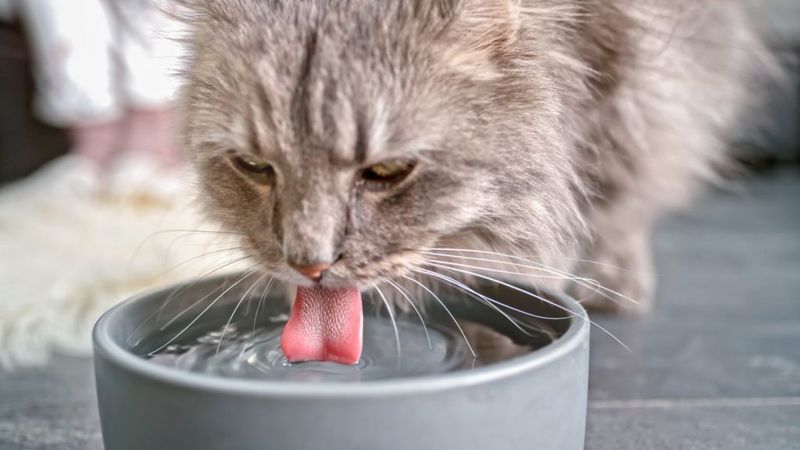
A sudden increase in water consumption might be more than a simple thirst.
Cats often drink more when dealing with illnesses like kidney disease or diabetes.
This noticeable change in behavior is a red flag that should prompt a vet visit.
Monitoring their water intake can provide valuable insights into their health status.
Timely intervention can lead to early diagnosis and treatment, ensuring your feline friend stays healthy. Keeping track of these changes is vital to their long-term well-being.
Weight Loss

Is your cat slimming down without trying? Unexplained weight loss can be alarming and might indicate underlying health issues.
It’s essential to monitor your cat’s weight regularly and note any sudden changes.
Conditions like hyperthyroidism, kidney disease, or diabetes can lead to rapid weight loss.
Consult with a vet to explore potential causes and implement a treatment plan. Addressing weight loss promptly helps maintain your cat’s health and prevents further complications.
A healthy weight contributes greatly to their quality of life and overall happiness.
Purring When Not Content (False Alarm)

While purring often signifies contentment, it can also be a self-soothing mechanism when cats feel unwell.
This behavior might mislead owners into thinking their pet is happy, when in fact, they might be in distress.
It’s important to observe the context and other signs of discomfort.
Recognizing this false alarm helps differentiate between genuine affection and a call for help. Understanding your pet’s purring patterns ensures you’re responsive to their true needs, offering timely care and support.
Increased Sleeping (False Alarm)
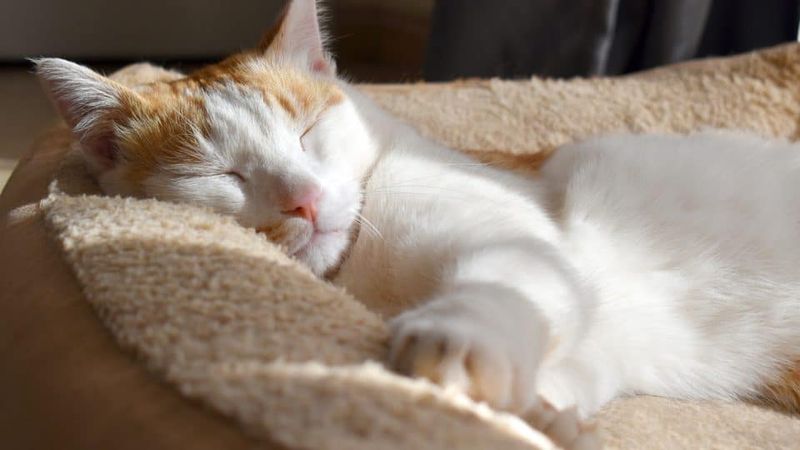
Cats love luxury naps, often sleeping up to 16 hours a day. Increased sleeping isn’t always a cause for alarm.
Environmental changes, boredom, or routine adjustments might lead to more slumber time.
However, if paired with other signs, it could be a signal of pain or illness.
Understanding your cat’s sleep patterns and observing for additional symptoms provides clarity.
Being aware of such false alarms ensures you react appropriately, knowing when to seek veterinary care.
Occasional Sneezing (False Alarm)
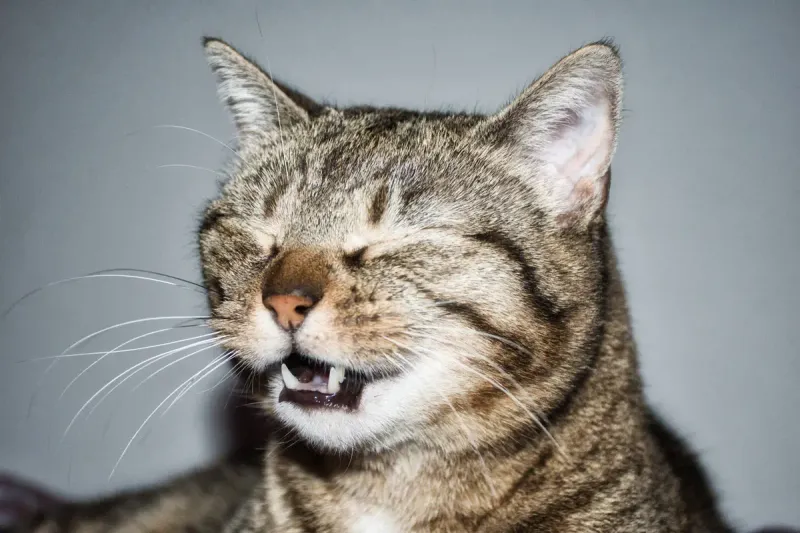
A random sneeze here and there can be more entertaining than alarming.
Dust, pollen, or even a tickle can cause occasional sneezing in cats.
Though persistent sneezing may require attention, a sneeze now and then is generally harmless.
Monitoring frequency and accompanying symptoms helps determine if there’s a genuine concern.
Understanding these false alarms prevents unnecessary panic, ensuring you focus on true health issues that might arise.
Playful Biting (False Alarm)
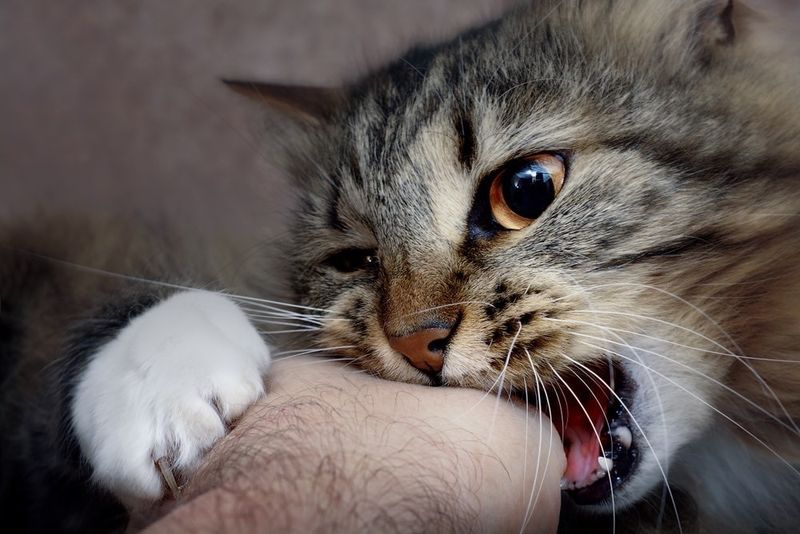
Cats often bite playfully, a behavior mistaken for aggression or discomfort.
This fun and interactive play often involves gentle nips, not intended to harm.
Recognizing this playful behavior ensures you don’t misinterpret normal feline antics as signs of pain.
Observing the context and your cat’s mood often clarifies the situation, confirming it’s all part of their joyful expression. Understanding these nuances in your pet’s behavior allows for a harmonious relationship.
Occasional Vomiting (False Alarm)
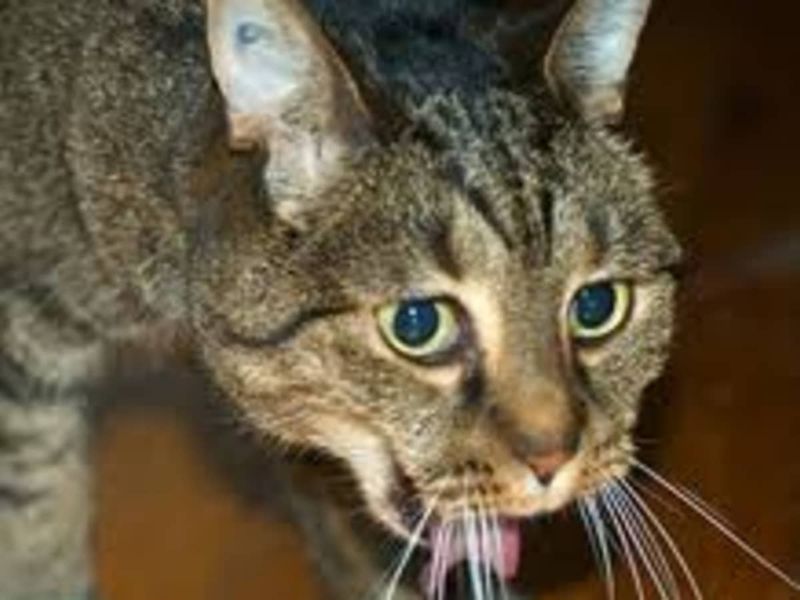
An occasional hairball or minor vomit isn’t unusual for cats.
Digestive upsets may occur from eating too quickly or grooming.
While frequent vomiting requires attention, isolated incidents usually don’t signal serious issues.
Observing your cat’s overall health and consulting a vet if patterns change provides peace of mind.
Recognizing these false alarms prevents undue worry, allowing you to focus on truly concerning symptoms that may develop.

